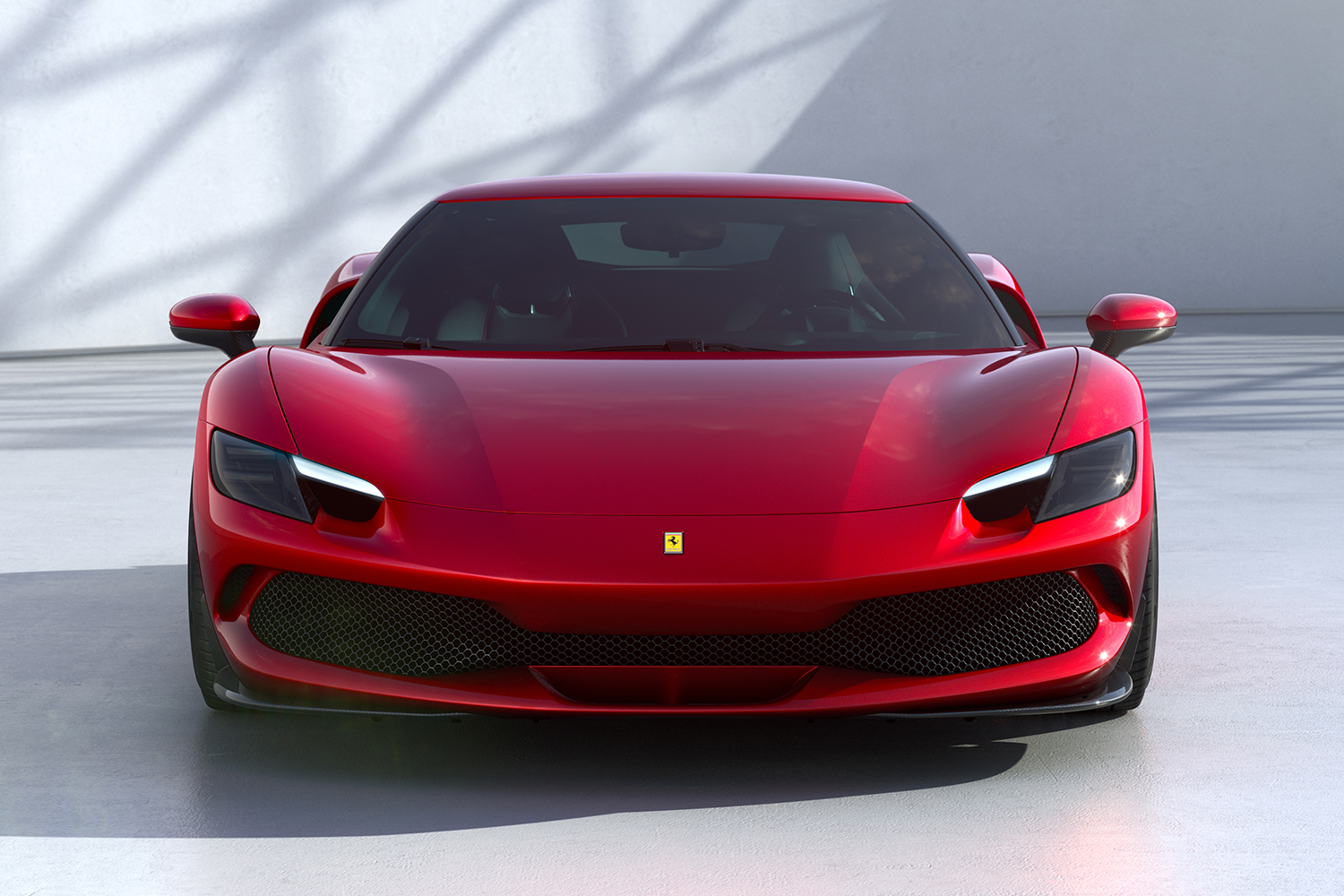The era of electric cars, despite still being in its infancy, has already managed to inflame the passions of gearheads the world over. Should the Mustang Mach-E, Ford’s new electric SUV, even be called a Mustang? Should the Hummer EV, which traces its lineage back to the military Humvee, have simply been called something else? Furthermore, should these newfangled electrified cars even be compared to those powered by the internal combustion engines of yore, or are they just too different? These are the questions keeping automotive enthusiasts up at night.
That is, until Dodge made its big announcement this week. On Thursday, during the American brand’s Electric Vehicle Summit, it was revealed that Dodge will be launching what it calls the “world’s first full battery electric muscle car” in 2024. As CEO Tim Kuniskis quipped, the idea here is “to tear up the streets, not the planet.” (Good one, Tim.)
This left us with dozens of new questions. The most obvious being: what’s the name? Dodge was light on the details, but a 10-second section in a video of the summit where Kuniskis randomly talks about hammerhead sharks has us thinking it’ll take its name from those oceanic predators. But the bigger and more consequential question is: can an electric vehicle ever be a real muscle car?
To answer that, I reached out to a number of automotive experts to weigh in.
What Makes a Muscle Car a Muscle Car?
Before we decide whether an EV can be a muscle car, we first have to determine what, exactly, makes a muscle car in the first place.
The problem is that the definition has been the subject of endless debate ever since the term came into being. Some say the 1964 Pontiac GTO was the first true American muscle car, others say that was simply when the terminology took hold. Some say muscle cars need a V8 engine, others say V6s on the right cars are just fine. Some focus on the two-door body, though there are plenty of four-door models begging to differ. Some say the only real adherents are from the ‘60s and ‘70s, some say we’ve still got plenty of modern muscle in the Ford Mustang, Chevy Camaro and Dodge Challenger, and still others pull out the “pony car” card and hold up the Challenger as the last true muscle car.
As for Leslie Kendall, chief historian at the Petersen Automotive Museum in Los Angeles, his definition is a little more forgiving.
“[A muscle car is] a midsize vehicle with a large engine — or I should call it an extremely large engine — with a high horsepower rating,” he tells InsideHook. There are other factors people consider, like rear-wheel drive (though the modern Challenger is available with all-wheel drive), but Kendall adds that the main thing it boils down to is a focus on a specific performance metric.
“In America, it’s all about acceleration. In other words, beating everybody else away from the stoplight,” he says. “Whereas in, for example, Italy, the whole idea was to get through the twisty mountain passes as gracefully and as quickly as possible. Acceleration wasn’t a big deal. But in America … American roads lend themselves to large cars with big, lazy engines that can out-accelerate other vehicles if the drivers so chose.”
Then, for argument’s sake, what about the EVs available to buy right now that would crush gas-powered cars like the Challenger in the quarter-mile, cars like the Tesla Model S Plaid?
“I think part of what makes a muscle car also a muscle car is the appearance,” says Kendall. “I think you have to admit that a Tesla just doesn’t come across as a muscle car. With muscle cars, you can’t help but think of the ‘60s and ‘70s, or the late ‘50s even.”
That seems to be part of Dodge’s selling point here. Over the years, muscle car makers have changed a lot about their high-performance drag-racing machines, but they’ve always kept some of the design DNA from the original straight shooters. And even though we don’t have much to go off of from Dodge’s new EV, from the veiled silhouette shown in a teaser video, it appears that aggressive, retro stance will carry over come 2024.
The Definition of the Muscle Car Has Changed
If Dodge follows through on the look, the power and the straight-line performance, we should be all set, right? Our automotive writer Benjamin Hunting certainly thinks so, but we caught up with him after he had been intercepted by a Challenger owner, so he added some asterisks to his answer.
“I actually had this exact conversation with a fellow muscle car owner today (he has a Challenger Hellcat, I have a Cadillac CTS-V),” he says. “I feel like EVs have the potential to match or exceed gas-powered muscle cars in terms of performance, and their overwhelming torque certainly places them squarely in the ‘muscle’ category. His perspective is that without the sturm und drang of a loud and raucous [internal combustion engine], electric performance cars can’t deliver on the expectations of current muscle car owners when it comes to the overall experience.”
Kendall made a similar comment, noting that the difference between gas and electric cars is “in the drama of driving” the former. (He compared combustion engine cars to shooting a rifle and EVs to shooting a laser.) But another expert we reached out to agreed with Hunting about the crucial element that sometimes gets lost in the dictionary definitions of muscle cars.
“A muscle car is best defined by its torque. Take a torquey, engaging powertrain and put it in a small- or mid-size 2-door vehicle and you’ve got a muscle car, pure and simple,” says McKeel Hagerty, the CEO that has turned Hagerty from classic-car insurance company into a full-on auto enthusiast brand. “It may not sound the same, it may not behave exactly the same, but the thrill it gives its drivers, passengers and even bystanders is likely unmistakable.”
Therein lies the crux of the issue: the definition of the muscle car has changed many times over the last few decades, and it’s going to keep changing as electrification becomes the norm, unless people would rather snuff out the category entirely and keep it sealed behind glass as a relic of the past. McKeel, for one, isn’t willing to do that, saying that he “can’t wait to see what Tim [Kuniskis] and the Dodge team do next.”
And despite Kendall having what appears to be the most old-school outlook on American muscle of the experts we rang up (it certainly comes with the territory of being a “chief historian”), he left us on a hopeful note for the future, whatever Dodge ends up delivering three years from now.
“I am not one to hold firm to any definition, because things change over time,” Kendall says. “If electricity is what’s going to drive the next generation of muscle cars, then we need to adjust our thinking to accept a definition that’s broader than we currently understand.”
This article appeared in an InsideHook newsletter. Sign up for free to get more on travel, wellness, style, drinking, and culture.




























